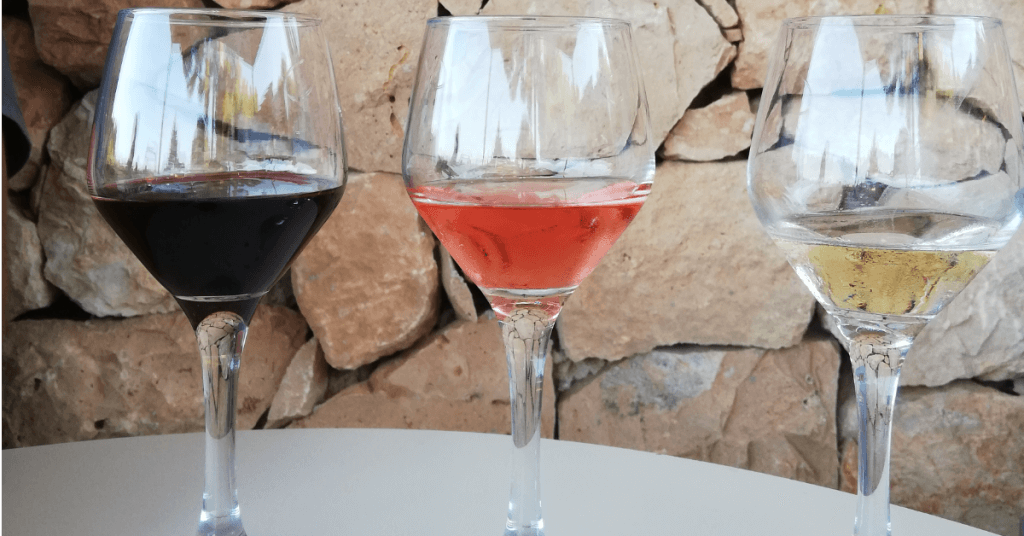Various regions and cultures have developed their unique wine styles, each with its own characteristics and flavors. From light and refreshing whites to bold and robust reds, the world of wine offers a diverse array of styles to explore and savor. The best way to learn about different Wine Styles is to actually taste wines – for example in one of my Wine tastings. But learning what styles exist will also help you in finding your favourite wines. So here a short description of the different wine styles.

Whites and Sparkling
Let’s have a look on the sparkling and white wines first.
Sparkling Wines
I love Sparkling Wines! Not only to celebrate a joyful event, but also as an Apéro or instead of a glass white. Produced through a process called secondary fermentation (bottle fermentation), these wines contain carbon dioxide bubbles that give them their sparkle. The most famous sparkling wine is Champagne, coming from the region with the same name, in France. Other notable sparkling wines include Prosecco from North Italy or Cava from Spain. Most Sparkling wines in Portugal are produced with the classic method. In Portugal there is not one specific sparkling wine, but you can find the “Espumantes” in all the regions. Try a Sparkling“Brut” Bairrada.
If you want to learn more about this category of wines, and my favourite portuguese Espumantes, then check my Blog-Post about Sparkling Wines.
Light-Bodied White Wine
The most popular wine is the light, dry and easy-drinking white. As they are as easy at beer and go with many situations – as an Apéro-Drink or for food. Known grapes for this style of wine are Sauvignon Blanc, Pinot Grigio or Grüner Veltliner. In Portugal it’s the most common type of white wines. Most Whites are light, have a strong acidity and are dry – due to the Atlantic climate, but also due to the grape varieties, like Alvarinho, Arinto, Loureiro, …
Full-Bodied White Wine
Full-bodied white wines are perfect for everyone who likes more heavy, rich and smooth wines with subtle creaminess. What makes them different than light white wines usually involves special winemaking techniques including the use of oak-aging, (the wine becomes smoother with barrel aging). Typical is a Chardonnay from California, or warmer climates in general, or a Viognier. In Portugal it’s hard to find a full-bodied white, due to the grape varieties and climate. You can try a good Malvasia Fina from Colares, or a some whites from Alentejo.
Aromatic (sweet) White Wine
You can find aromatic White Wines which are sweet, but also those which are dry. Here the most important aspect is the grape variety, rather than the winemaking process. Known grapes are Moscatel, Gewürztraminer or Riesling. In Portugal you can find the variety of Moscatel, famous is the fortified dessertwine “Moscatel de Setúbal”, but you can also find dry versions of the same grape variety. Also some wines made with the grape Fernão Pires would count in this category.
Rosé Wines
Wines in pale red colour – made with red grapes, but the skin contact during the fermentation only last for some hours. You can find lots of Rosé wines, and lots of bad ones too. Known for the sweet touch it’s not the most popular wine. Here in Portugal most Rosés are dry, mineralic and fresh. A must try!

Red Wines
Here now the different styles of red wines:
Light-Bodied Red Wine
Light bodied red wines are typically pale in colour, light tannins, easy to drink. There are more delicate. As they are easy to drink, they are quite popular. A good example is the grapes are Pinot Noir. In Portugal it’s hard to find this light bodied wines – due to the climate and grape varieties.
Medium-Bodied Red Wine
Medium red wines are the most flexible wines. As they already offer a lot of aromas, have some Tannins and some acidity, and a medium body. Some are aged in oak, but you can find also a wide variety of medium wines made in Steel tanks. They are easy to pair with a wide variety of food. Typical varieties are Merlot, Sangiovese, Montepulciano or Grenache. In Portugal you find them for example in Dão or Lisbon region.
Full-Bodied Red Wine
Full bodied wines bring usually more colour in the glass: Dark and deep red. These wines have most tannins of all reds, with a full body and structure. It’s a wine to pair with a nice dinner, as the food helps with the tannins. Most known grapes are Cabernet-Sauvignon, Syrah or Malbec. Here in Portugal we can find good Touriga Nacional, Aragonês, Trincadeira or Alicante Bouschet. You find them in Alentejo, Tejo, Trás-Os-Montes and of course Douro.
Dessert Wine
As the name says: a Dessert wine is a sweet wine. Although the range is wide as we can also find some dryer ones with nice acidity to balance the sweetness. You can find different types of late-harvest wines or fortified wines. In Portugal of course it’s the Port-Wine which is the leaser in this category, but also the Moscatel de Setúbal.
Conclusion
If this is new to you, it is definitely worth doing a tasting where you can try the different types of wines. Book your wine tasting with 5 different wines, including different wine styles, with me – here. When you have the different wines side by side in your glass, you will quickly realize what is meant by these categories. This way you will also find out what type of wine is suitable for you, what your preferences are, and this in turn will help you decide which wines you want to drink. Of course, this is a simplification of reality, but nevertheless you will find some wines that pretty much fit the 9 wine categories described. So, let’s uncork the wines! Cheers.

